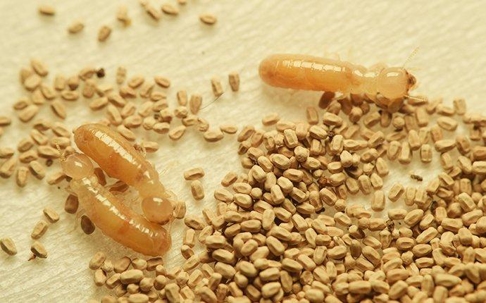Termites are likely the most destructive pest found in the Bay Area. While other pests, such as rodents, can also destroy property, termites are particularly invasive and also difficult to remove. But, one common misconception about these pests is that all termites are the same when, in actuality, there are different species.
People often think of subterranean termites when imagining the pest, but drywood termites are also found in the area. While subterranean termites need moisture from the soil to survive, drywood termites do not. They have much lower moisture needs than other species, and they can even damage wooden items that are sound.
This means they can destroy a wide range of things from decks to flooring to support beams. And, over time, this damage can really add up and end up costing you a lot of money.
What Do Drywood Termites Look Like?
The way these termites look varies depending on their position in the colony. The termite swarmers, which are responsible for reproduction, are dark brown and have two sets of wings. The front set of wings has a pattern of well-pigmented veins. Also, these swarmers will usually shed their wings quickly after leaving the nest.
The drywood termite soldiers are usually a creamy white color and do not have wings. However, they do have one major distinguishing feature. They have a large mandible that looks like a claw coming from their mouths, and their head is dark brown.
Signs Of Drywood Termites
Because these termites can do a great deal of damage to your Bay Area home, knowing the signs of termite activity can help you identify the problem more quickly and avoid expensive repairs.
While subterranean termites build nests in the ground, drywood termites build nests above ground in the wood that they infest. They can get inside homes through vents or rooflines or they may be brought inside if you bring home wooden flooring, furniture, or construction beams that are already infested.
However, many of the signs of drywood termites and subterranean termites do overlap. Below are some of the primary signs of drywood termite activity:
- Finding piles of termite wings or dead termites around decks, doorways, and baseboards
- Discovering small holes in exposed pieces of wood
- Having floorboards that are starting to buckle or squeak
- Noticing that doors and windows have started fitting tightly in their frames.
How Do I Remove Drywood Termites?
The truth is that drywood termites are nearly impossible to remove using DIY methods. They are an invasive pest that can infest and build nests in all kinds of wooden items throughout your property, and you likely won’t even notice an infestation until it’s already well established.
The only truly effective way to remove these destructive pests and keep them from coming back is with help from Bay Pest Solutions. We have the tools and experience necessary to handle termites in a safe, effective manner.
Tips For Preventing Termites In The Future
The overall best step in termite prevention is working with the pros at Bay Pest Solutions, but you can also implement some measures yourself to protect your home. Here are a few of the best ways to keep drywood termites out.
- Seal up cracks in foundations, exterior walls, and rooflines to keep termites from getting in.
- Inspect lumber and wooden furniture for signs of termite damage before bringing these items home.
- Keep firewood and other wood piles stored at least 30 feet away from the exterior of your home.

